
While Lenovo is more known for the ThinkPad and Yoga series of notebooks, they are quickly catching up with the competition thanks to their Legion lineup. Today, we’re going to take a look at the Lenovo Legion Y740. As one of their top dogs in their range of gaming notebooks, it hides powerful hardware in a muted chassis.

| CPU | Intel Core i7-9750H |
| GPU | NVIDIA GeForce RTX 2070 Max-Q |
| OS | Windows 10 Home |
| RAM | 16GB DDR4 2666MHz (Dual Channel, Upgradeable) |
| Display | 15.6-inch IPS, 1920 x 1080, 144Hz, NVIDIA G-Sync, HDR 400 |
| Storage | Up to 512GB PCIe NVMe, Up to 2TB HDD |
| I/O Ports | 1x USB 3.1 Gen2, 2x USB 3.1 Gen1, 1x Mini DisplayPort 1.4, HDMI 2.0, RJ-45 Ethernet, AC Adapter, Thunderbolt 3 Type-C, 3.5mm combo jack, NOVO Hole |
| Connection | Killer Wireless 2×2 802.11ac WiFi, Bluetooth 4.1 |
| Weight | Starts at 2.2kg |
| Dimensions | 361.42 x 267 x 22.45mm |
| Battery | 3-Cell, 57Whr |
| Audio | Dolby Atmos Speaker System |
| Others | Backlit Keyboard with Corsair iCUE RGB Lighting, USB Power Delivery, 720p Webcam |

Like the Lenovo IdeaPad L340, the Lenovo Legion Y740 sports a more minimalist look instead of being over-the-top. The back of the display is a slab of aluminum only accented by the Legion logo.
Though the top portion of the Iron Gray chassis is almost monolithic in nature, you can add a bit more flair since the “O” part of the Legion logo lights up in RGB.
The Legion Y740 is a bit larger and thicker than your usual notebook, which may give away its gaming nature. The 15.6-inch laptop, however, is no means large measuring at 361.42 x 267 x 22.45mm. It’s also a bit lighter than some gaming notebooks at just 2.2kg.

The Lenovo Legion Y740 comes with a 15.6-inch 1920 x 1080 IPS display with a 144Hz refresh rate. The display is also NVIDIA G-Sync compatible to eliminate any screen tearing while playing games.
The display is properly bright allowing usage outside. There is a bit of matte anti-glare coating so any light coming from the back doesn’t aggressively reflect off the screen. The IPS nature of the screen also allows you to choose from a variety of viewing angles.
There’s no major spots with backlight bleed aside from a few minor ones found near the bottom of the display. The screen is HDR 400 certified and produces well-saturated colors.

The bottom of the display also houses the 720p webcam of the system. Although Lenovo have solved the webcam positioning in thin displays like the one found on the Lenovo Yoga S940, it’s a bit odd that the brand still chose this weird placement for the Y740.
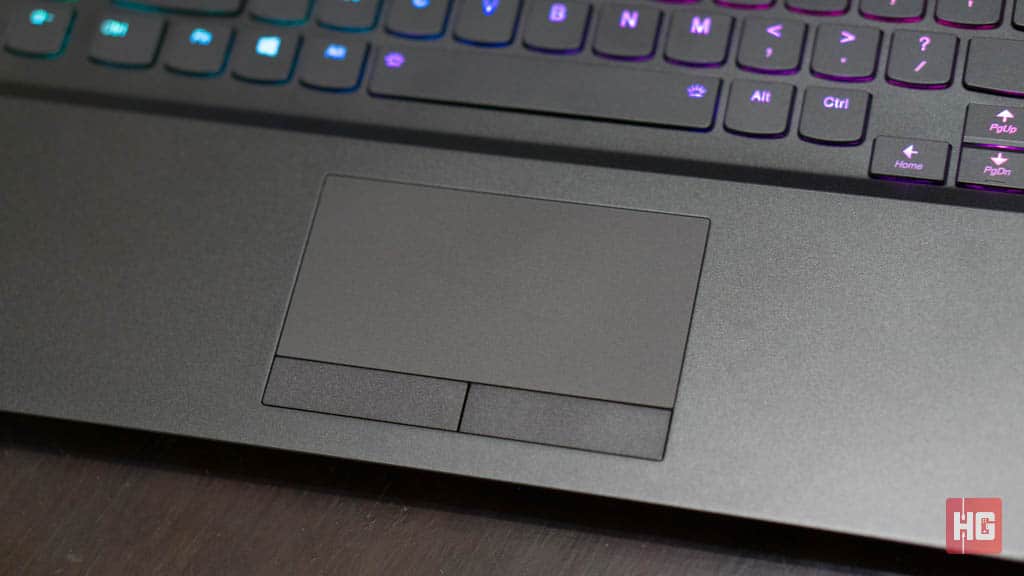
The touchpad found on the Lenovo Legion Y740 is smooth as expected. There are two physical buttons at the bottom for the left- and right-clicks. Both buttons offer a decent amount of resistance to be tactile but not to be burden to the user’s finger.

Above the touchpad is the system’s 75% layout keyboard. The keyboard offers a good amount of tactility and travel distance before inevitably bottoming out. The Fn key is located at the bottom left that offers additional benefits such as media keys, display brightness, volume control, and other navigational functions when pressed in addition of a clearly marked corresponding key.
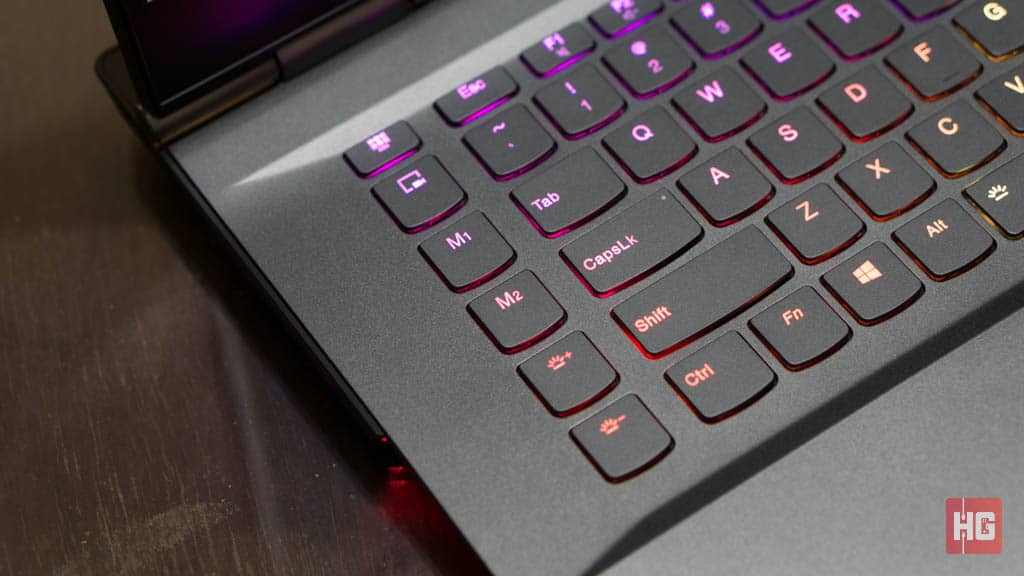
Lenovo has added six quick access keys at the left-hand side of the device. These buttons include a shortcut for Lenovo Vantage, Game Capture, Brightness levels for the backlight as well as two Macro keys that can be customized via the Lenovo Vantage Software.
Though the sizes of each key is unaffected by the addition of six extra keys, Lenovo has positioned them in a way that centered the whole keyboard onto the system. This means that the main portion of the keyboard has been shifted a bit to the right. Despite this shift, it only takes a few hours of typing on the keyboard to get your muscle memory up to speed.
Input and output ports for the notebook is littered everywhere on the notebook. The left-hand side comes with a 3.5mm combo jack and a Thunderbolt 3 Type-C port. Located at the right-hand side is a sole USB 3.1 Gen2 port.
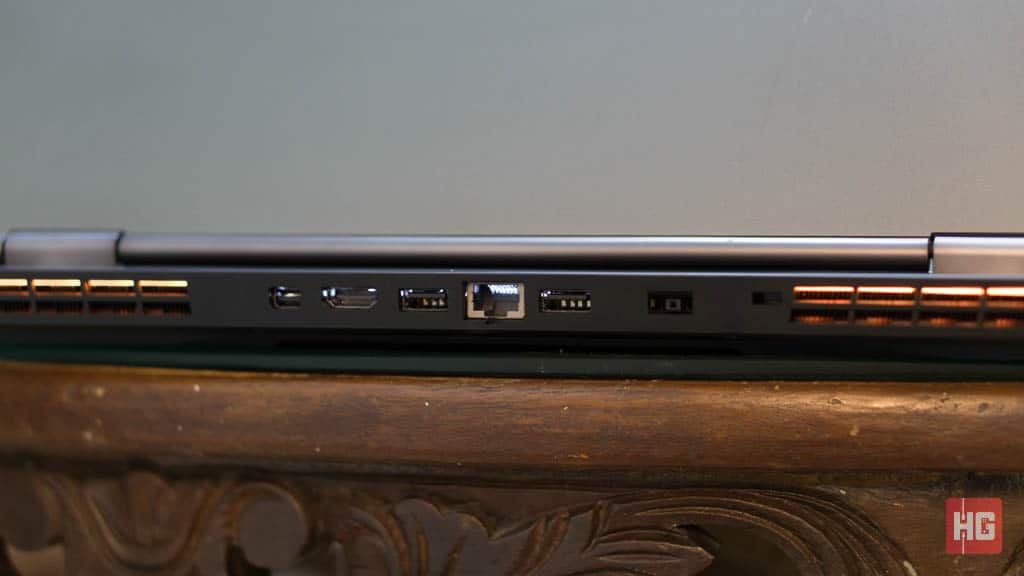
Some of the more obtrusive connections are located at the back to allow for additional space for peripherals at the sides. These ports include a Mini DisplayPort 1.4, HDMI 2.0, and RJ-45 Ethernet connection, two USB 3.1 Gen1 ports, the AC adapter port, and a Kensington lock.

Labels for the ports at the back do light up in order for you to easily locate and distinguish them even in dark conditions.
Of course RGB lighting will be included since the Lenovo Legion Y740 is a gaming notebook. Aside from the aforementioned “O” in the Legion logo on the chassis as well as the whole keyboard, the Legion Y740’s vents and USB ports at the sides also lights up in RGB.
The Lenovo Legion Y740’s RGB controls is provided by Corsair via their iCue software. The four zones can be easily customized in the iCue app. Every individual zone can be set with their own lighting mode independent from each other. The keyboard is lit per-key allowing almost an infinite amount of customization on it alone.
Long standard RGB modes are available such as Rainbow, Solid, Static Color, Ripple, Wave, among a ton of other options. You can also personalize the RGB lighting to let you know the general temperature level of the system to warn you if it’s getting too hot.
The Legion Y740 also comes with Lenovo Vantage. The Vantage app allows you to customize the performance, thermal performance, macro keys, as well as monitor the temperature of the CPU and GPU of the system.

Powering the Lenovo Legion Y740 is a 9th Generation Intel Core i7-9750H 6-core, 12-thread processor, an NVIDIA GeForce RTX 2070 Max-Q, a 1TB of PCIe x4 NVMe M.2 drive, and 16GB of DDR4 RAM running at 2666MHz.
As usual, we put the Lenovo Legion Y740 through its paces by running a couple of CPU and GPU benchmarks. This year, we’ll be adding Cinebench R20 to our benchmark suite. We’re working on adding more benchmarks as time goes on in order to have more reference points in our reviews.
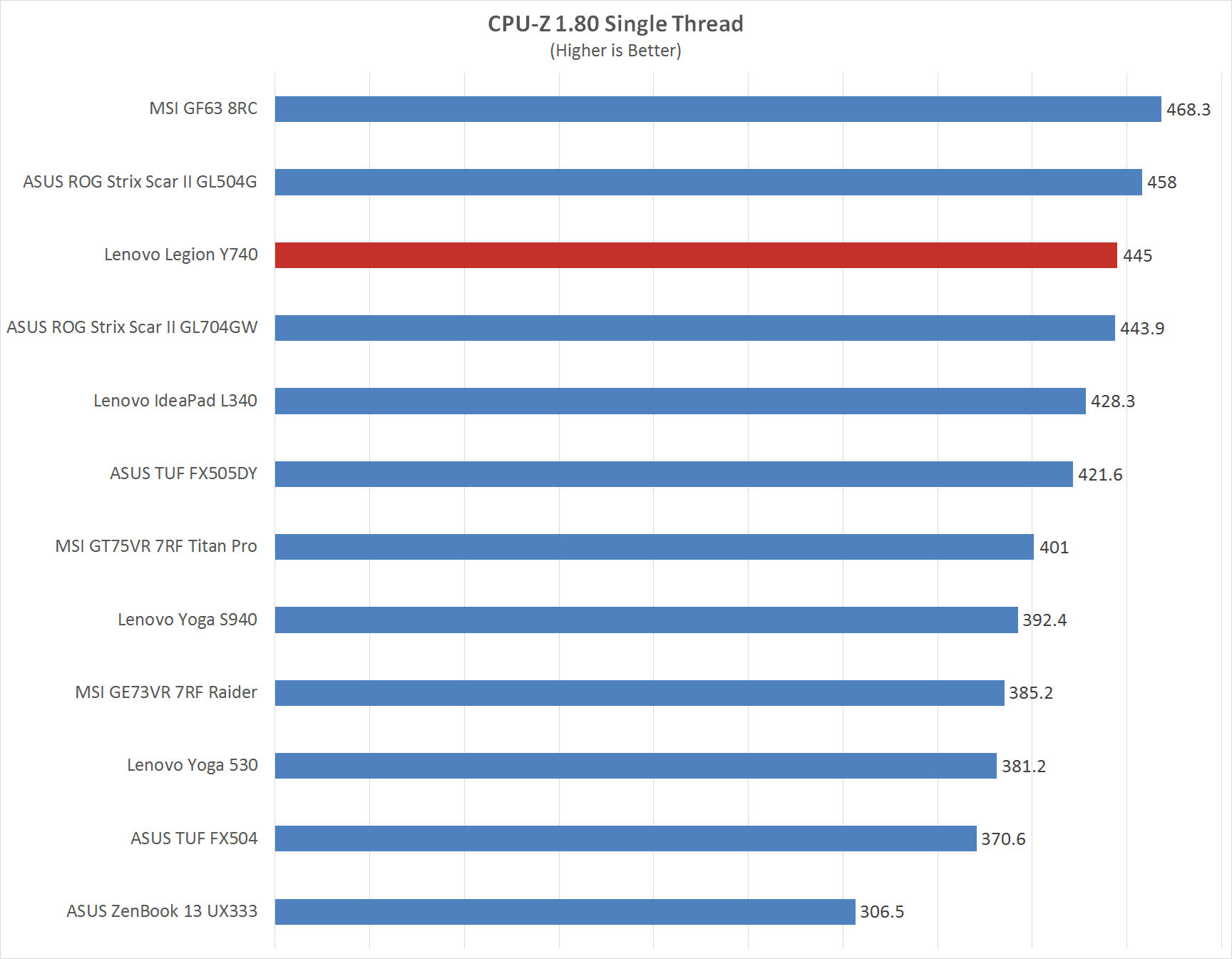

“CPU-Z is a freeware that gathers information on some of the main devices of your system such as processor name and number, codename, process package, cache levels, mainboard and chipset, as well as memory type, size, timings, and module specifications. It also offers real time measurement of each core’s internal frequency and memory frequency.”
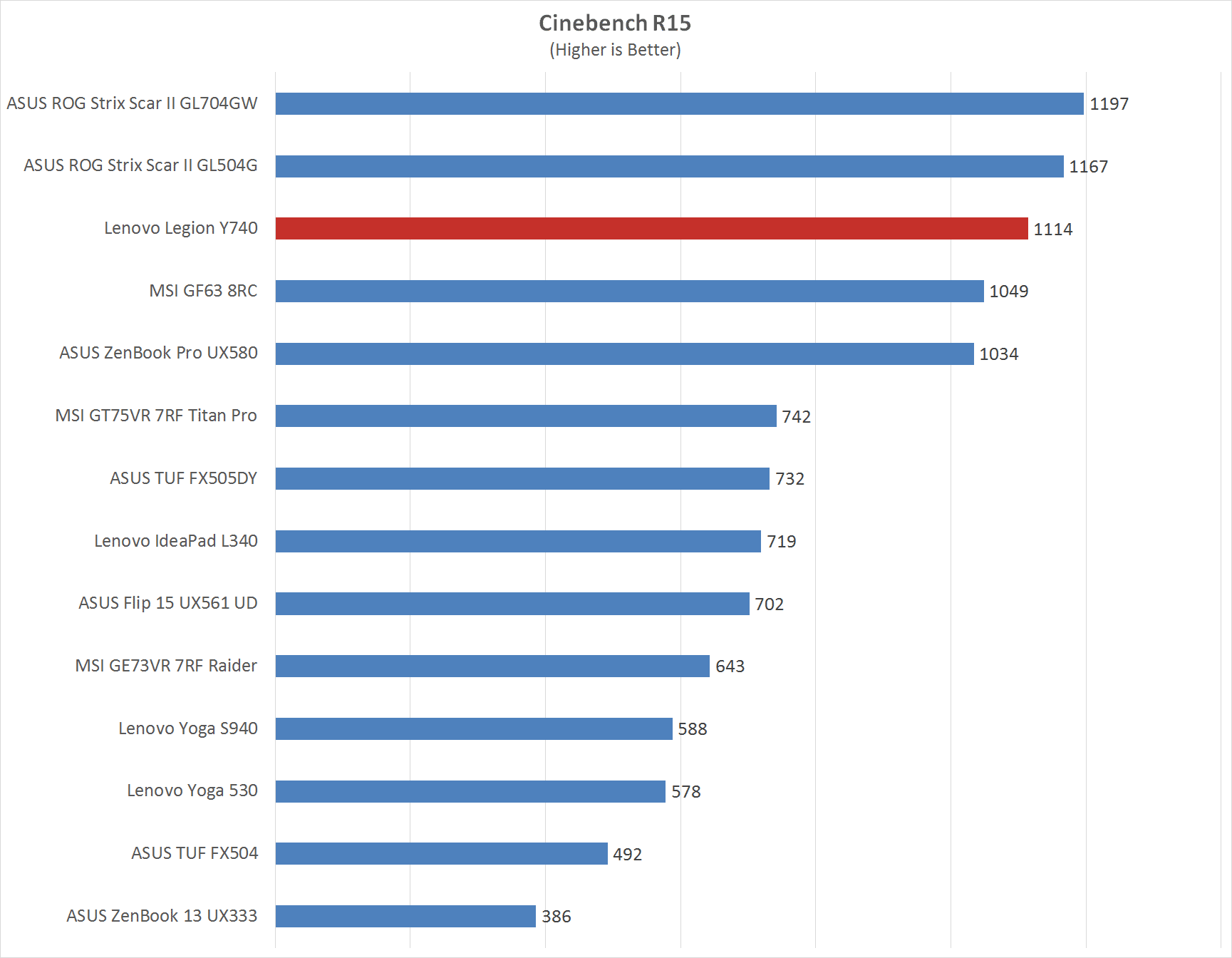
“Cinebench R15 CPU test scenario uses all of your system’s processing power to render a photorealistic 3D scene. This scene makes use of various algorithms to stress all available processor cores. In fact, CINEBENCH can measure systems with up to 256 processor threads.This test scene contains approximately 2,000 objects which in turn contain more than 300,000 polygons in total, and uses sharp and blurred reflections, area lights, shadows, procedural shaders, antialiasing, and much more. The result is displayed in points (pts). The higher the number, the faster your processor.”

“Cinebench R20 provides improved benchmark accuracy for current and next-generation CPUs to test if a machine runs stable on a high-CPU load, if the cooling solution of a desktop or notebook is sufficient for longer-running tasks to deliver the full potential of the CPU, and if a machine is able to handle demanding real-life 3D tasks.”


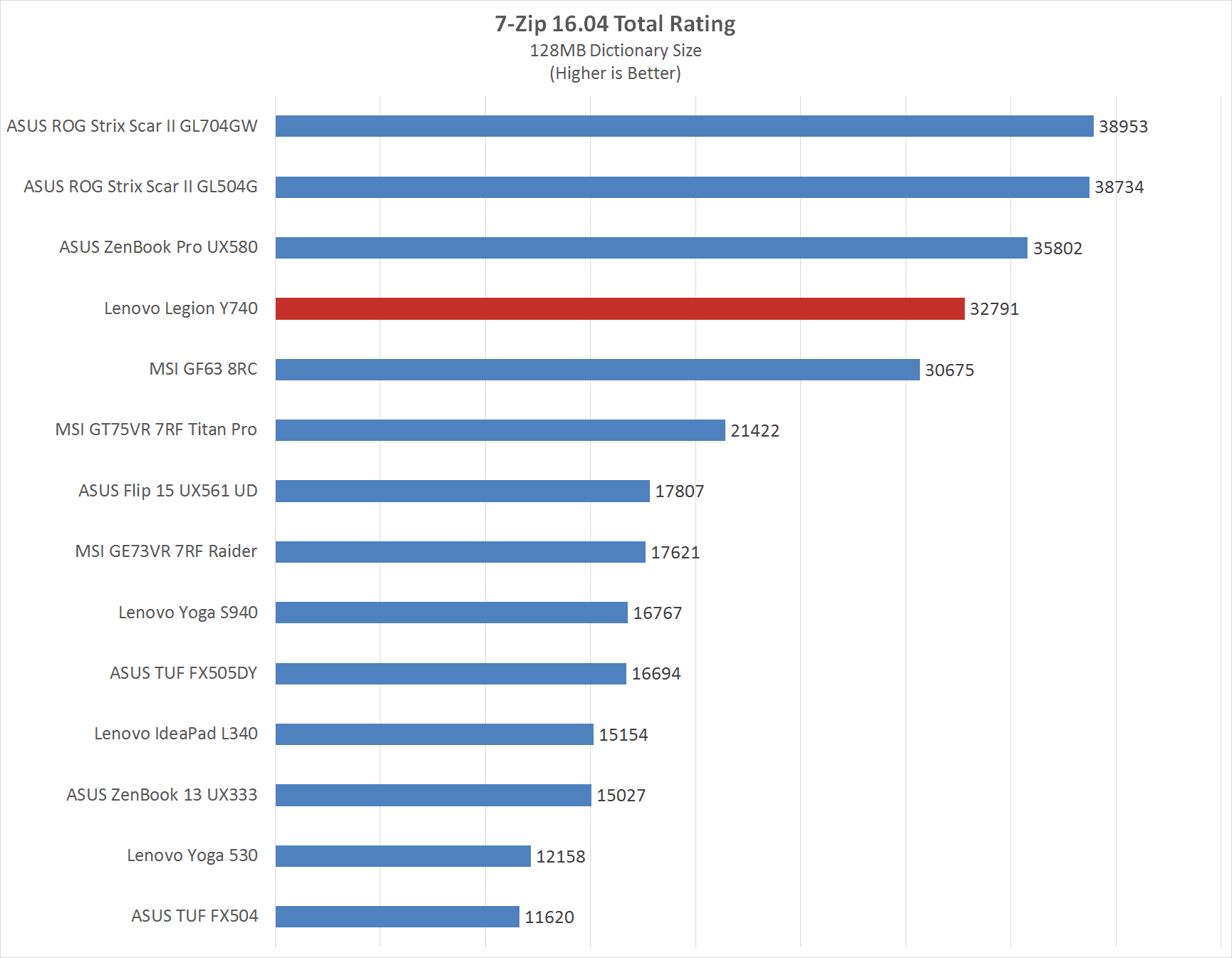
“7-Zip is a file archiver with a high compression ratio for ZIP and GZIP formats, which is between 2 to 10% better than its peers, depending on the exact data tested. And 7-Zip boosts its very own 7z archive format that also offers a significantly higher compression ratio than its peers—up to 40% higher.”


“wPrime is a leading multithreaded benchmark for x86 processors that tests your processor performance by calculating square roots with a recursive call of Newton’s method for estimating functions, with f(x)=x2-k, where k is the number we’re searching, until Sgn(f(x)/f'(x)) does not equal that of the previous iteration, starting with an estimation of k/2. It then uses an iterative calling of the estimation method a set amount of times to increase the accuracy of the results. It then confirms that n(k)2=k to ensure the calculation was correct. It repeats this for all numbers from 1 to the requested maximum.”

“Designed to showcase the DirectX 11 API, the Futuremark 3DMark Firestrike became a standard in benchmarking as it not only tests the capabilities of the GPU, but also the capabilities of the whole system for a complete stress test.”

“A follow-up to the reboot of the series, Lara is now searching for a lost treasure that his father was investigating before his passing. Following the same gameplay as Tomb Raider reboot from 2013, the Rise of the Tomb Raider is a worthy title under the Tomb Raider series.”

“Now an experienced covert operative, Adam Jensen is forced to operate in a world that has grown to despise his kind. Armed with a new arsenal of state-of-the-art weapons and augmentations, he must choose the right approach, along with who to trust, in order to unravel a vast worldwide conspiracy.”
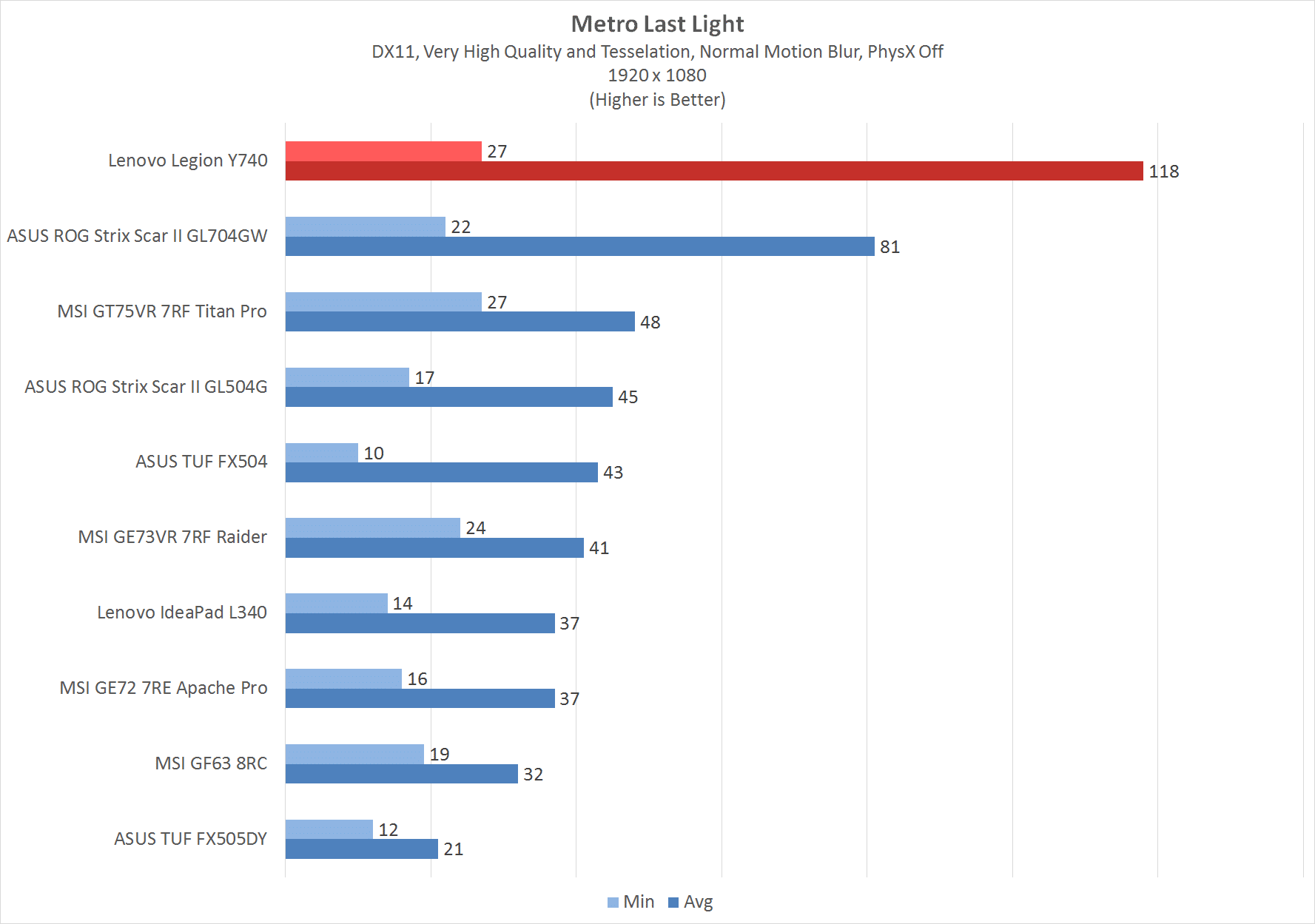
“It is the year 2034. Beneath the ruins of post-apocalyptic Moscow, in the tunnels of the Metro, the remnants of mankind are besieged by deadly threats from outside – and within. Mutants stalk the catacombs beneath the desolate surface, and hunt amidst the poisoned skies above.”

“There is a world beyond ours. Beyond nations, justice, ethics. It never sleeps. It exists everywhere. And once you enter…there is no going back. Welcome to the World of Assassination. You are Agent 47, the world’s ultimate assassin.”
Thanks to an updated Intel Core i7-9750H, the Lenovo Legion Y740 is able to eke out every ounce of performance possible. This allows the notebook to top most of our charts in the CPU tests.
Gaming on the Legion Y740 is also great. Our benchmarks show that the NVIDIA GeForce RTX 2070 Max-Q inside the notebook is able to pump out a lot of frames that averages above the standard 60fps. This should allow a smooth gaming experience even when most of the demanding graphical settings are turned up.
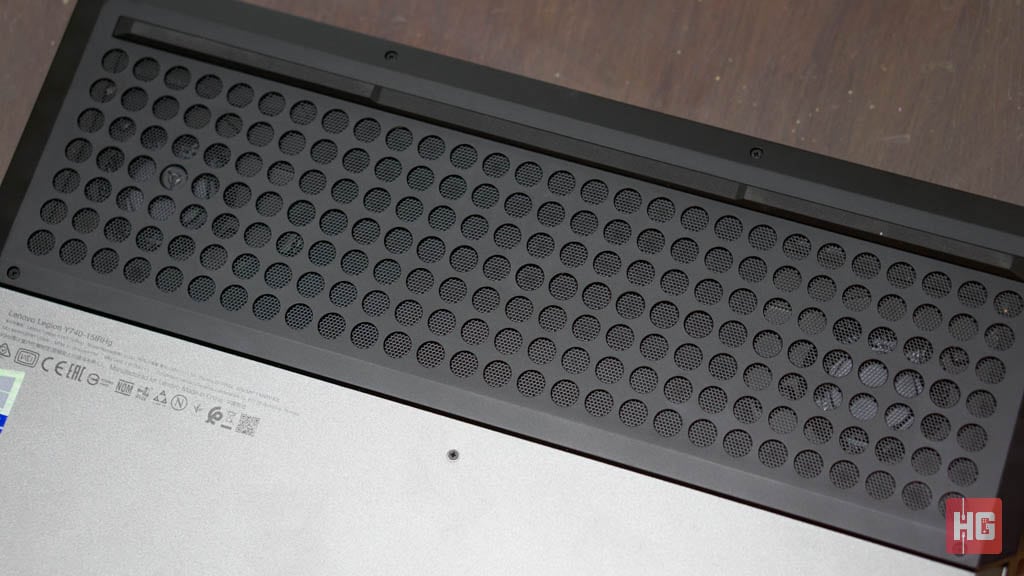
The Lenovo Legion Y740 comes with a total of four vents that exhausts heat outside of the case. The intake for the fans are located at the bottom protected from dust by a mesh screen. Fortunately, the laptop’s profile is a bit raised to allow cool air to flow to the fans.

CPU temperature is rests in the toasty side of the graph. Idle and minimal workloads puts the CPU temperatures at 43°C. Under maximum load, however, the temperature will shoot up to 94°C which is a bit too hot to our liking.
GPU temperatures are significantly cooler compared to the processor’s. While its minimum temperature is higher at 47°C, its highest temperature is only 73°C. This lower heat production comes thanks to the Max-Q design of its RTX 2070.
Battery life is a bit of a disappointment on the Legion Y740. The 3-cell 57Whr battery on the device is simply not enough to power the device throughout the day. In our testing, the notebook only lasted just around 2 hours and 30 minutes while doing our rounds for work.
Gaming will further drain the battery. Playing StarCraft II on the notebook only lasted about an hour before it ate up all the reserves. Charging will take more than an hour. It seems that the battery will only last you until you see another electrical plug in your vicinity.
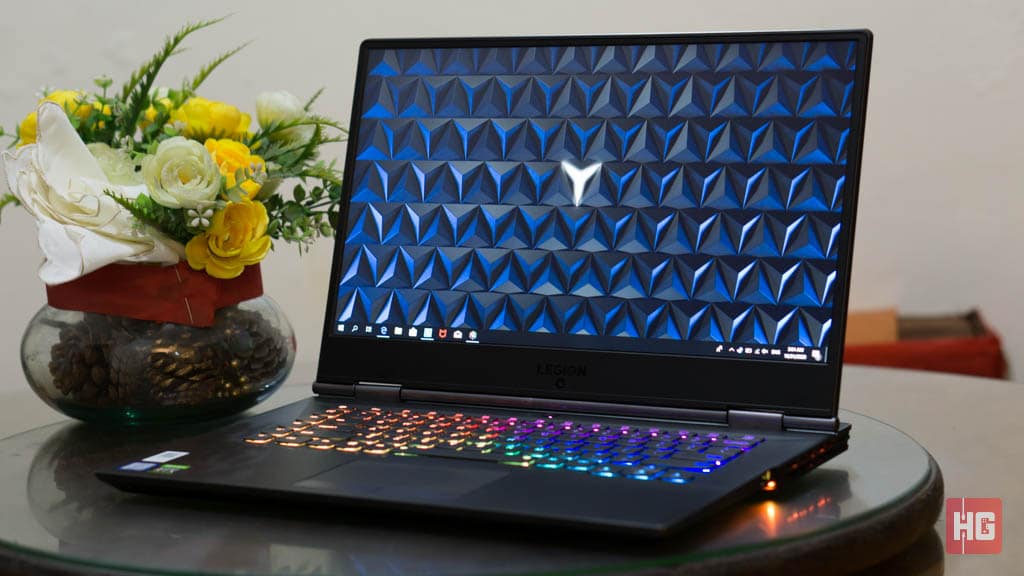
Priced at PhP 134,995, the Lenovo Legion Y740 comes with its share of advantages and disadvantages. Its minimalist design language is sure to attract more mature gamers that like muted design instead of the garish looks found other gaming notebooks in the market.
Gaming-wise, the Legion Y740 comes with all the amenities that will allow you to perform without any hitches. The 15.6-inch 144Hz display paired with an NVIDIA GeForce RTX 2070 Max-Q and an Intel Core i7-9750H can pretty much play Triple A games without any hitches.
The notebook, however, does have some downsides. You might take a while before becoming familiar to the odd keyboard positioning. Though GPU temperatures remain low, the CPU temperature may become a concern in the long run especially if you live in a dusty environment.
The abysmal battery life of the Lenovo Legion Y740 is its largest weakness. The 3-cell 57Whr battery is simply not enough to power the device throughout the day. Frankly, we’d trade a bit of weight in order for the notebook to last longer.

Even though the Lenovo Legion Y740 has some shortcomings, its design and performance are still impressive. This is why we’re giving the notebook our Seal of Approval. If you’re out in the market for a minimalist gaming notebook, then give the Lenovo Legion Y740 a close look. Just stay close to a power plug if you do decide to pull the trigger.
